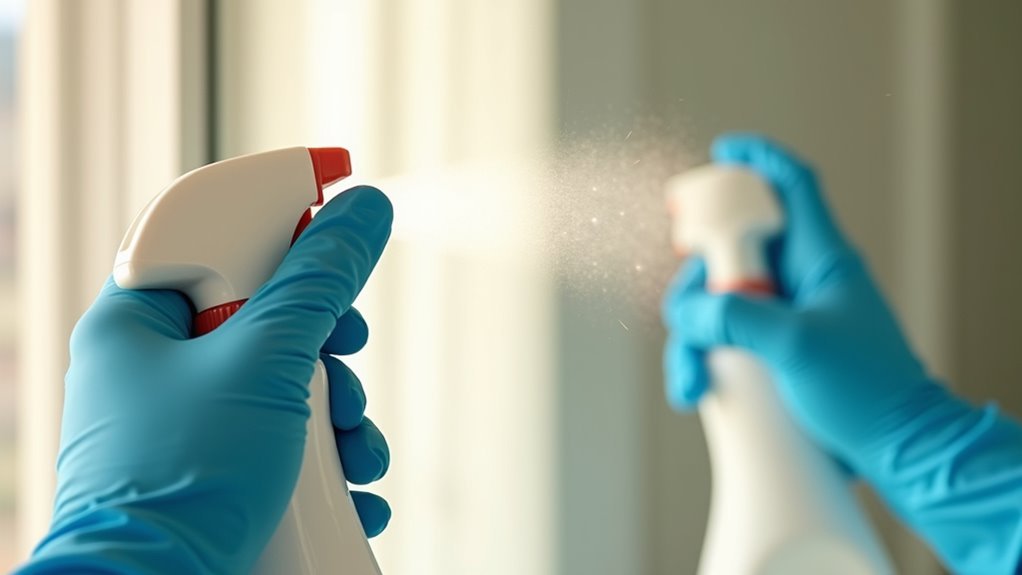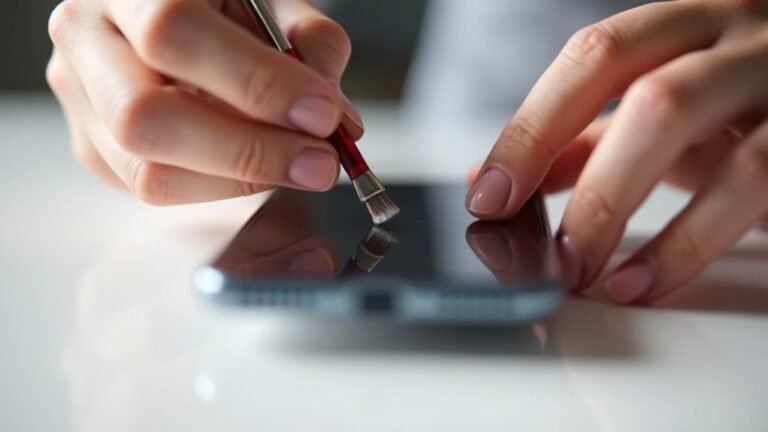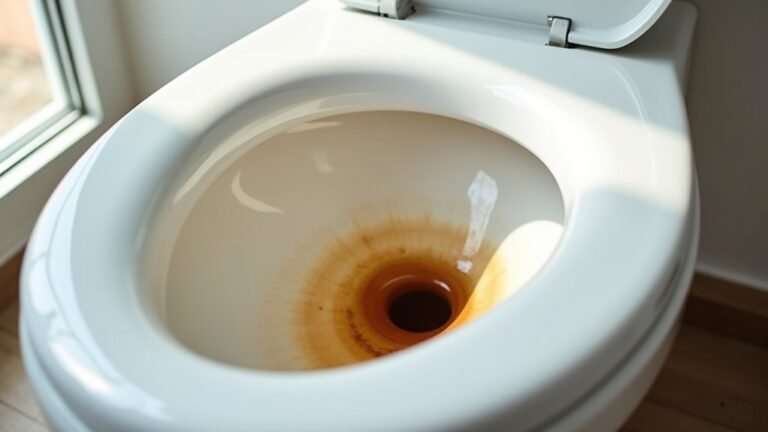We've all noticed those annoying marks on our bathroom mirror when the sun hits it just right – fingerprints, toothpaste spots, and water drops we didn't see before. While you might think grabbing some paper towels and glass cleaner is the answer, getting a truly clean mirror takes a bit more know-how.
Some of the links in this article may be affiliate links. If you make a purchase through these links, we may earn a small commission at no extra cost to you. Thank you.
According to Sarah Dempsey, cleaning expert at MyDomaine, "The biggest mistake people make when cleaning mirrors is using too much product. A light mist is all you need – excess cleaner is usually what causes those frustrating streaks."
Getting a spotless mirror isn't rocket science, but there are some tricks that cleaning pros use to make mirrors sparkle without leaving behind fuzzy bits or streaks. Let's look at the best ways to get your mirror as clean as the ones you see in hotels and magazines.
Clean Mirrors Without Streaks

When it comes to achieving a streak-free shine on your mirrors, using the right techniques and materials makes all the difference.
We recommend using a microfiber towel or soft cloth for cleaning mirrors, spraying your homemade cleaning solution onto the cloth rather than directly on the glass.
Work in an S-pattern from top to bottom, and don't forget to check for remaining water spots under different lighting.
##
Let's look at what works and what doesn't when cleaning mirrors to get the best results.
We'll share proven steps that will help you achieve a crystal-clear reflection, from choosing the right cleaning solution to using proper wiping techniques.
Whether you're dealing with everyday smudges or tough buildup, we'll guide you through the dos and don'ts of mirror maintenance while protecting your mirror's surface for years to come.
Things to Do When Cleaning a Mirror
Cleaning a mirror properly requires careful preparation and attention to detail to achieve a streak-free, sparkling finish. The process involves protecting the surrounding area, preparing the surface, using the right cleaning solution, and employing proper technique to guarantee ideal results without damaging the mirror's delicate coating or creating frustrating streaks.
- Remove bathroom items and cover surfaces – Clear the area and protect countertops and floors from water damage.
- Dust mirror surface – Remove loose debris and inspect for stubborn spots or buildup.
- Mix cleaning solution – Combine equal parts vinegar and distilled water in a spray bottle.
- Apply solution to cloth – Dampen cleaning cloth instead of spraying directly on mirror.
- Wipe in S-pattern – Clean from top to bottom using consistent, overlapping strokes.
- Check under different lights – Inspect for missed spots or streaks from multiple angles.
- Dry edges thoroughly – Use clean cloth to remove moisture from edges and corners.
- Final inspection – Confirm no residue or streaks remain on the mirror surface.
Things to Avoid When Cleaning a Mirror
When cleaning mirrors, it's essential to be mindful of the products and tools you use, as improper cleaning methods can cause permanent damage to the reflective surface.
Using the wrong cleaning supplies can lead to scratches, discoloration, cloudiness, or deterioration of the mirror's protective coating, ultimately compromising its appearance and functionality.
Ammonia-based cleaners – These harsh chemicals can damage tinted mirrors and cause the backing to peel or cloud over time.
Bleach solutions – Regular use leads to streaking and can dull the mirror's surface, reducing its reflective properties.
Multi-purpose cleaners – These often contain harsh chemicals that leave behind toxic residues and create a hazy appearance.
Abrasive cleaning tools – Rough sponges and scrubbing pads can create scratches and permanently damage the mirror's protective coating.
Paper towels – The rough fibers can leave behind lint and create fine scratches that accumulate over time, affecting the mirror's clarity.
Steps
Cleaning a mirror properly requires careful attention to both technique and materials to achieve a streak-free, sparkling finish.
The key is using the right cleaning solution and following a systematic approach that prevents smudges and protects the mirror's surface while effectively removing all dirt, grime, and buildup that can accumulate over time.
Step 1: Gather supplies including spray bottle, microfiber cloths, distilled water, and white vinegar
Step 2: Mix equal parts distilled water and white vinegar in the spray bottle
Step 3: Remove loose debris by dusting the mirror surface
Step 4: Spot clean stubborn marks with rubbing alcohol
Step 5: Apply cleaning solution to microfiber cloth until slightly damp
Step 6: Wipe mirror in an S-pattern from top to bottom
Step 7: For heavy buildup, use a soft cloth with minimal dish soap
Step 8: Avoid getting cleaning solutions on mirror edges
Step 9: Dry thoroughly with a clean microfiber cloth
Step 10: Establish regular cleaning schedule for maintenance
Final Thoughts
Maintaining a spotless mirror doesn't have to be complicated once you've mastered the right techniques and tools.
By establishing a consistent cleaning schedule and using soft microfiber cloths with a DIY vinegar-water solution, we can keep our mirrors pristine.
Even stubborn dirt can be tackled effectively with the right approach, making regular cleaning a simple part of our household routine.
##

Keeping your mirrors spotless doesn't have to be a challenge when you follow these proven cleaning methods. Whether you opt for simple warm water, a vinegar solution, or tackle tough stains with washing-up liquid, the key lies in using the right tools and techniques.
Remember to always work with soft, lint-free cloths and avoid harsh chemicals that could damage the mirror's surface. By implementing regular maintenance with a daily cleaning routine, you'll maintain crystal-clear reflections and prevent the buildup of stubborn grime.
Start implementing these mirror-cleaning techniques today – your home will look brighter, feel cleaner, and your mirrors will maintain their pristine condition for years to come. A few minutes of proper care can make all the difference in achieving that perfect, streak-free shine.






